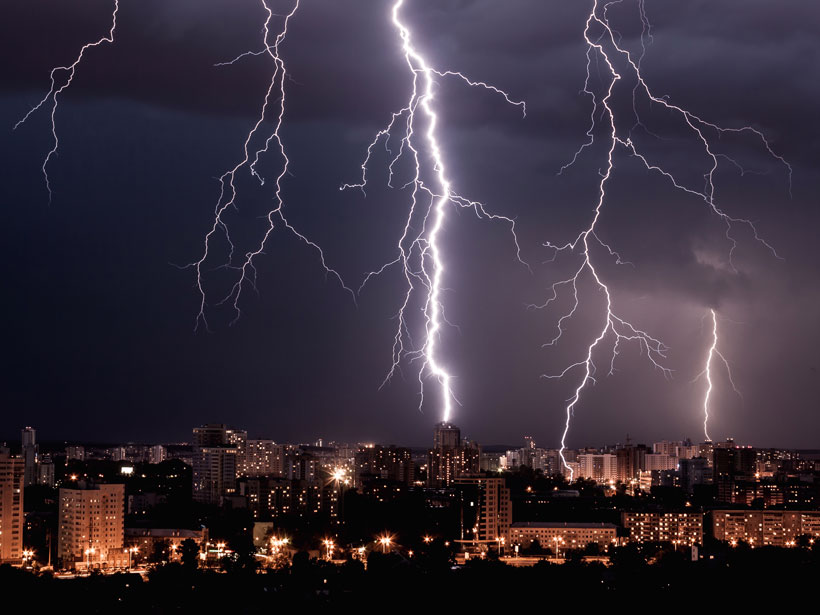“There’s a term in French that describes falling in love at first sight: coup de foudre,” said Yoav Yair. “Literally translated, it means ‘bolt of lightning.’” Yair is the dean of the School of Sustainability at the Interdisciplinary Center Herzliya in Israel and Eos’s Science Adviser for AGU’s Atmospheric and Space Electricity section. “This is how I felt about atmospheric electricity when I started my master’s degree at Tel Aviv University back in the 1980s: instant fascination, deep curiosity, and a desire to know more.”
I was excited when Yair suggested that we cover lightning in our May issue of Eos. As a magazine editor, I certainly think you can’t beat the photography, but more than that, I was intrigued by the number of questions that remain about this phenomenon nearly all of us have grown up experiencing, watching from our windows as storms roll in. “Lightning is indeed beautiful, dangerous, and multifaceted, and it hides a lot and reveals a lot. And although it has been known to humanity for millennia—feared and worshiped—we still don’t fully understand it,” explained Yair.
Chris Schultz of NASA’s Short-term Prediction Research and Transition Center assures me we are living in a “second golden age” of lightning observations. In “Lightning Research Flashes Forward,” meteorologist Ashley Ravenscraft explains how she uses data recently made available to the National Weather Service from the Geostationary Lightning Mapper on board the GOES-R satellite that show the rate of lightning strikes in an area. She uses these data—sometimes these data alone, when necessary—as a proxy to predict tornadoes and issue warnings to the nearby Huntsville, Ala., community. Like so many meteorologists, she got into the field to save lives, and with this new information, she’s giving her neighbors sometimes as long as 45 minutes to get to safety.
“In recent decades, we have made tremendous progress and devised sophisticated ways to decipher lightning and its associated impacts on the atmosphere,” said Yair, “here on Earth and also on other planets.” In “Planetary Lightning: Same Physics, Distant Worlds,” we take a trip through the solar system to investigate why lightning is pervasive on Jupiter, how Neptune and Uranus are similar in so many ways except in generating lightning, and, in this case and so many others, why Venus is just so weird.
Finally, where are all these lightning data when you need them? Morris Cohen, professor of electrical engineering at Georgia Institute of Technology (and president-elect of AGU’s Atmospheric and Space Electricity section) tells us about WALDO—the Worldwide Archive of Low-frequency Data and Observations—in “Returning Lightning Data to the Cloud.” He and a colleague manage this database of radio measurements meant to facilitate research not only in lightning but also in space weather, terrestrial gamma rays, and gravity waves, among other phenomena.
“As our society becomes more technological, urban, [and] densely populated, and as our climate is changing, we need to know what lightning will be like in the future,” said Yair. We hope our coverage this month gives you some idea of how lightning affects us, as well as of the interdisciplinary nature of the exciting science questions it presents.
—Heather Goss (@heathermg), Editor in Chief
Citation:
Goss, H. (2020), Investigating the spark, Eos, 101, https://doi.org/10.1029/2020EO143307. Published on 24 April 2020.
Text © 2020. AGU. CC BY-NC-ND 3.0
Except where otherwise noted, images are subject to copyright. Any reuse without express permission from the copyright owner is prohibited.
Text © 2020. AGU. CC BY-NC-ND 3.0
Except where otherwise noted, images are subject to copyright. Any reuse without express permission from the copyright owner is prohibited.


